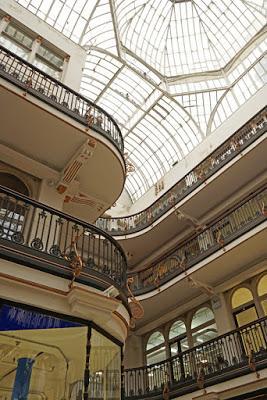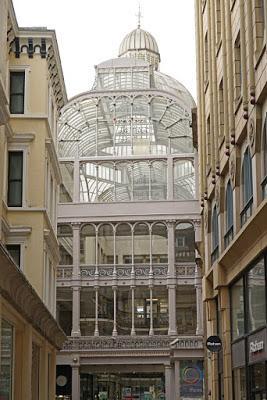
A slightly cramped entrance between buildings hardly prepares the visitor for the light, soaring construction of iron and glass revealed inside. In Pevsner's guide to Manchester, Clare Hartwell describes it as 'one of the loveliest Victorian shopping arcades in the country'.
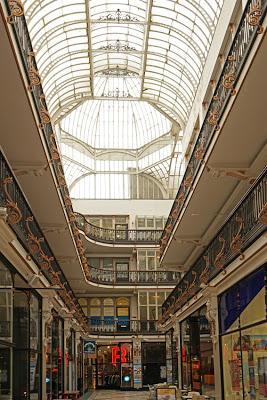
The arcades of London and Paris are clearly constrained by their sites, narrow and sometimes dog-legged; by contrast, the Barton Arcade feels relatively spacious. This is partly thanks to its soaring roof, but also reflects a change in inspiration and purpose. While the earlier arcades originally aspired to fashionable exclusivity, the Barton Arcade is acknowledged to have taken its inspiration from the Galleria Vittorio Emmanuele II in Milan, much larger and closer to today's shopping centres. Although it wasn't fully completed when Barton Arcade was being built, it had already been featured in The Builder - an honor its smaller Manchester counterpart would later share.
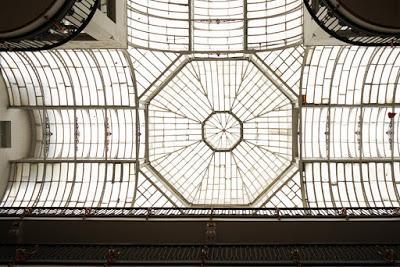
This was also a rather different situation to the in-filling of cramped sites in the city. Deansgate had recently been widened, and many of the buildings originally lining the street demolished; the Barton Buildings were among the first new constructions. Their name is that of the developer, John Hope Barton, a local property owner whose arcade cost him £45,000 to build. The generous payment he received for buildings demolished in the road-widening scheme, as well as the grant of this site in compensation, no doubt helped with the cost!
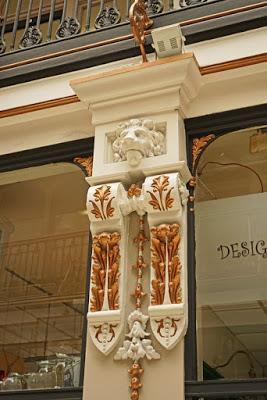
The Arcade was restored in the 1980s, so the shop fronts and floor are not original. However, the sweep of curving balconies built by Corbett, Raby & Sawyer is intact, and the fabulous ironwork from Macfarlane's foundry creates a roof which is as breathtaking as when first built.
